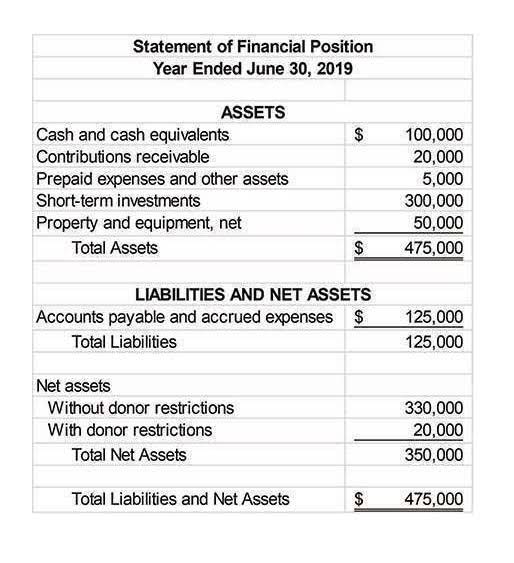
Let us understand the concept better with the help of a couple of examples. In a personal injury case, as noted above, the attorney may return the amount of the retainer to the client if the attorney succeeds in winning a payment of money damages for the client. In this case, the retainer is more like an advance from the client to cover costs during the lawsuit. An attorney who works on an hourly basis might ask for a sum of money at the beginning of the attorney-client relationship. Then, as the attorney works for the client, they would withdraw their monthly charge from the retainer account. If the retainer were to be used up before the work was complete, the attorney might ask for an additional amount.
- In legal situations, a retainer fee may be paid to ensure that the attorney knows that their client is taking the situation seriously.
- Additionally, setting up a regular payment schedule, whether it’s monthly or quarterly, can help both parties manage their cash flow more effectively.
- The presence of a retainer fee guarantees that clients have access to legal support whenever necessary.
- The company will transfer $800 per month into the retainer account in return for the four agreed pieces.
- Having the scope of legal work reduces the possibility of confusion and make things more clear for both parties.
Earned Retainer
- For example, if the retention rate is 10%, a contractor invoicing $50,000 for a phase of work will only receive $45,000, with $5,000 retained by the project owner.
- In general, the fees that the attorney recovers for taking a case on a contingency fee basis will be expressed as a percentage of total recovery.
- Retainer fees can enhance the client experience by providing a sense of security and transparency.
- On the other hand, at-home providers like ALIGNERCO offer a more cost-effective solution without compromising on quality.
- For instance, if a project is taking longer than expected, discussing the financial implications early on can help in renegotiating terms or adjusting the retainer fee.
- Similarly, the following table outlines average hourly rates for attorneys based on rural versus urban areas and firm size.
Once the retainer has been spent, then further deposits will be required. There may also be additional charges for court appearances, letters and legal filings. They like to be able to see exactly what they are getting for the money they are paying. By paying money before the project starts, the client can feel comfortable knowing that the person they are retaining is unlikely to stop halfway through. Ultimately, the decision to charge a retainer fee should be based on what makes the most sense retainer fee for you and your client.
Advantages and Disadvantages of Retainer Agreements

For example, a marketing firm hires a content writer on a retainer in order to produce four 1,000-word blog posts each month on a variety of topics. Sometimes, it will be done on the achievement of milestones instead, such as when each stage of a project is completed. When a retainer has been paid, it can make it awkward or difficult to discuss charges incurred for extra work. Retainer fees are a common practice in the freelance world, but they’re often misunderstood. In the event of a dispute, these clauses can provide guidance on how disagreements should be handled. In arbitration, a private judge (or another third party) hears both sides of the dispute and decides how to resolve the issue.

Security Retainer
These tools not only save time but also reduce the likelihood of errors, ensuring that both parties have a clear record of all financial transactions. The content within this article is a general guide and may not apply to your specific situation. To ensure that you’re managing your retainer fees correctly, please contact a financial adviser. An earned retainer fee is the amount of money that the professional has earned by working to a set point or through so many hours. On the other hand, an access retainer is an agreement on the number of hours that will be provided rather than what will be done during those hours. Access retainers remain among the more popular of the two choices because you can determine a flat fee for the services provided.

When discussing the types of retainers that may be used, many will consider earned and unearned Accounting for Churches retainers. This can sometimes lead to clients expecting more than the service provider is able to give. Unless the work and processes are clearly set out before the retainer is paid, it can leave some confusion between parties when it comes to understanding exactly what will be provided. They may not need the individual to work for them full-time, but a retainer paid in advance would ensure that their services are available whenever they are required.

The retainer will be agreed according to the number of pieces of content required and the rates of the individual writer. Once the project has been completed, an invoice for hours spent ledger account will be submitted. This agreement is useful for both parties as it sets the budget for the project and indicates the amount of work which will be required. By providing funds upfront, the individual who is providing the service will know that their client intends to see the project or task through to the end.

- While it offers significant benefits, managing retention effectively is crucial to avoid cash flow issues and disputes.
- Once the project reaches completion, the withheld amount, referred to as the retention payable, is released.
- There are a number of situations in which a retainer fee, or part of it, might be returned to a client.
- Similarly, attorney retainer fees tend to increase if you work with a lawyer who charges a higher hourly rate.
- For example, if an attorney estimated that the matter would cost $5,000 but your goal was accomplished for $3,000, the remaining $2,000 from your retainer can be refunded back to you.
Regular communication and updates are crucial in maintaining this trust, ensuring that any issues or changes in scope are addressed promptly. The choice between retainer fees and hourly billing often hinges on the nature of the work and the preferences of both the client and the service provider. Clients know upfront what they will be paying, which aids in budgeting and financial planning. This arrangement can be particularly beneficial for ongoing projects or long-term relationships where the scope of work is somewhat fluid but consistent.
